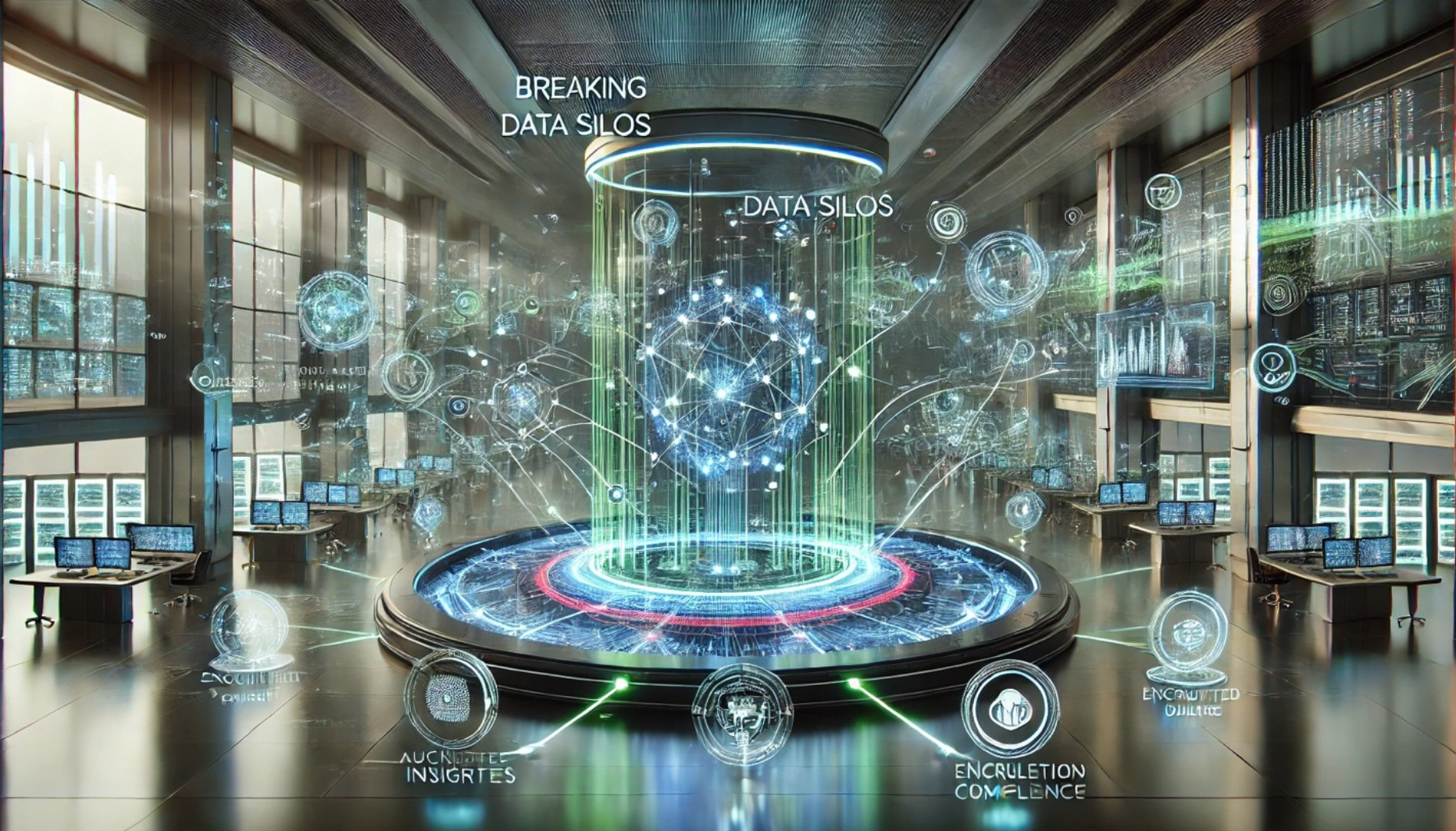
The Right Way to Transition and Modernize Legacy Systems: Managing Software EOL in Regulated Industries

Introduction
In regulated industries such as banking and healthcare, the modernization of legacy systems and effective management of software End-of-Life (EOL) are imperative. These sectors deal with sensitive data and are subject to stringent regulatory requirements, making it critical to maintain up-to-date, secure, and efficient IT infrastructures.
Importance of Legacy Modernization
Legacy systems often struggle to comply with contemporary regulatory standards. Regulations such as GDPR in Europe, HIPAA in the United States, and various financial oversight laws require robust data protection mechanisms. Outdated systems may not support the latest encryption standards or may lack critical security features, making them vulnerable to breaches and non-compliance penalties.
2. Security Vulnerabilities
Older software can have unpatched security vulnerabilities that expose organizations to cyber threats. Modernizing these systems ensures that the latest security protocols and updates are in place, significantly reducing the risk of data breaches, which are particularly damaging in industries handling sensitive information.
3. Operational Efficiency
Legacy systems can be resource-intensive, leading to inefficiencies. Modern solutions often leverage cloud computing, artificial intelligence, and machine learning to optimize operations. These technologies can streamline workflows, reduce downtime, and enhance overall productivity, crucial for maintaining competitive advantage and high service standards.
4. Interoperability and Scalability
Modern IT environments require seamless integration between various systems and platforms. Legacy systems often lack the flexibility to integrate with modern technologies, creating data silos and inefficiencies. Modernization facilitates better interoperability and scalability, enabling organizations to adapt quickly to changing business needs and technological advancements.
Also Read: Application Modernization: Turbocharge your digital journey by transforming your legacy apps.
Key Considerations for Enterprise
1. Inventory and Prioritization
Organizations should maintain a detailed inventory of all their applications, categorizing them by importance, complexity, and regulatory requirements. This helps in prioritizing which systems to modernize first based on their criticality and impact.
2. Risk Management
A comprehensive risk assessment for each application is essential. This involves evaluating the potential risks associated with outdated systems, including security vulnerabilities, compliance issues, and operational inefficiencies.
3. Stakeholder Engagement
Successful modernization requires collaboration across the organization. Involving key stakeholders from different departments ensures that all functional and regulatory requirements are met. Regular communication and training sessions can help in smooth transitions and adoption of new systems.
4. Continuous Monitoring and Improvement
Post-modernization, continuous monitoring is necessary to ensure that the new systems operate optimally and remain compliant with evolving regulations. Regular updates and iterative improvements help in maintaining the integrity and performance of the IT infrastructure.
Also read: Extending Legacy Life Cycle.
AWS Services for Modernization
AWS offers various services that can aid in the modernization of legacy systems in regulated industries:
- AWS Cloud Migration Services: AWS provides comprehensive cloud migration services, including AWS Migration Hub, AWS Server Migration Service (SMS), and AWS Database Migration Service (DMS), to facilitate the smooth transition of legacy systems to the cloud.
- AWS Security Services: AWS provides a suite of security services such as AWS Identity and Access Management (IAM), AWS Key Management Service (KMS), and AWS Shield, ensuring that the modernized systems adhere to the highest security standards.
- AWS AI and ML Services: AWS offers AI and ML services like Amazon SageMaker, AWS Lambda, and AWS Deep Learning AMIs to enhance operational efficiency and drive innovation in data processing and analysis.
- AWS Integration Services: AWS Step Functions, AWS Glue, and Amazon API Gateway are instrumental in achieving interoperability and seamless integration between modernized systems and other platforms.
Also Read: Cloud Done Right: AWS + Apexon Partnership
Different Approaches to Drive EOL in a Regulated Industry
1. Big Bang Approach
The Big Bang approach involves replacing the entire legacy system in one go, transitioning to a new system at a predefined point in time. This method is characterized by its comprehensive and immediate shift from old to new, with the goal of minimizing the duration of the transition period and quickly realizing the benefits of the new system.
Pros of the Big Bang Approach
• Immediate Realization of Benefits:
With the entire system updated, the organization can instantly leverage the improved performance and capabilities of the new technology stack. This can lead to faster processing times, better user experiences, and more efficient operations. All new features and functionalities are available immediately across the organization. Immediate transition ensures that the organization benefits from the latest security protocols, reducing vulnerabilities associated with older systems.
• Smooth Transition:
Transitioning all at once avoids the complexities and overhead of managing and synchronizing dual systems. This can reduce the administrative burden on IT staff and streamline the overall process. Data migration and integration are handled in a single, unified process, reducing the risk of inconsistencies and ensuring that all data is immediately available in the new system. A single cutover date provides a clear timeline for the transition, making it easier to plan and communicate across the organization.
• Clear Cutoff:
The old system can be fully decommissioned, eliminating the ongoing costs and risks associated with maintaining outdated technology. This includes reducing the need for legacy system maintenance. Training efforts can be concentrated on the new system, ensuring that all users are up to speed quickly and support resources are not spread thin between old and new systems.
Cons of Big Bang Approach
• High Risk of Disruption:
The transition period, even if planned meticulously, can involve downtime that affects business operations. Any issues during this period can cause significant disruptions, impacting the entire organization and making troubleshooting more complex and critical.
• Intensive Planning and Execution:
The complexity of transitioning all systems at once requires exhaustive planning, testing, and validation to ensure a smooth cutover. Significant resources must be allocated to manage the transition, including time, personnel, and financial investment.
• Resistance to Change:
A sudden shift to a new system can be challenging for users, leading to potential resistance and requiring comprehensive training programs. The organization must manage the cultural shift that accompanies such a significant change, ensuring that all employees are supported and engaged throughout the process.
2. Phased Approach
The Phased Approach to legacy modernization involves gradually replacing parts of the legacy system over a period, rather than transitioning everything at once. This method allows for a more controlled and manageable migration, reducing risks and enabling continuous improvements. The organization can upgrade its systems in discrete phases, addressing critical components first and progressively moving to less critical ones.
Pros of the Phased Approach
• Reduced Risk:
By upgrading systems in phases, the organization can manage and mitigate risks incrementally. This reduces the likelihood of widespread operational disruptions and allows for more manageable troubleshooting. Each phase can be thoroughly tested and validated before moving to the next, ensuring that any issues are identified and resolved early. This minimizes the impact on business operations and ensures a more stable transition. In the event of a failure during a phase, it is easier to revert to the previous state without affecting the entire system, providing a safety net that can prevent major setbacks.
• Incremental Improvements:
The organization can progressively enhance its systems and processes, allowing for continuous improvements and refinements based on real-world feedback and performance metrics. The phased approach allows for scalable deployment of new features and functionalities, enabling the organization to prioritize critical areas and gradually extend modernization efforts across the entire IT landscape. Spreading the modernization efforts over multiple phases allows for better budget management and financial planning, reducing the financial strain of a single large-scale transition.
• Easier Change Management:
Gradual changes are easier for users to adapt to, reducing resistance and improving acceptance of the new system. Training can be provided in phases, focusing on specific groups of users or departments as each phase is rolled out. Continuous feedback from each phase can be used to refine and improve subsequent phases, ensuring that the modernization effort is aligned with user needs and expectations.
Cons of the Phased Approach
• Longer Timeline:
The overall modernization process can take significantly longer compared to the Big Bang approach. This extended timeline can delay the realization of the full benefits of the new system. The continued operation of legacy systems during the phased transition means that the organization remains exposed to the risks associated with outdated technology for a longer period.
• Temporary Inefficiencies:
During the transition, the organization may need to manage and integrate both old and new systems, creating temporary inefficiencies and complexities. Users may experience inconsistencies as different parts of the system are upgraded at different times, potentially leading to confusion and dissatisfaction.
• Complex Coordination:
Managing the interdependencies between old and new systems requires careful planning and coordination. Ensuring that all components work seamlessly together can be challenging, particularly in complex IT environments. Allocating resources effectively across multiple phases can be difficult, requiring careful planning to ensure that each phase is adequately supported without overburdening the organization.
3. Hybrid Approach
The Hybrid Approach combines elements of both the Big Bang and Phased approaches, aiming to balance the benefits and drawbacks of each. This method involves modernizing critical systems quickly while phasing in less critical components over time. The Hybrid Approach is designed to mitigate the risks associated with a full-scale Big Bang transition while avoiding the prolonged timeline of a purely phased implementation.
Pros of the Hybrid Approach
• Balanced Risk and Speed:
By rapidly modernizing the most critical systems, the organization can quickly address the most pressing risks and realize immediate benefits in essential areas. Focusing on high-priority systems for immediate upgrade minimizes the overall downtime compared to a full-scale Big Bang approach, while still addressing critical vulnerabilities early in the process. Phasing in less critical systems over time allows for careful planning and execution, reducing the risk of widespread issues and enabling more manageable troubleshooting and optimization.
• Flexible and Adaptable:
The Hybrid Approach allows for a tailored modernization strategy that can adapt to the specific needs and constraints of different parts of the organization. The organization can scale the modernization effort according to its capacity and resources, ensuring that each phase is adequately supported without overwhelming the IT department or disrupting business operations. Continuous feedback and adjustment enable the organization to refine and improve the process as it progresses.
• Targeted Modernization:
By prioritizing critical systems for immediate upgrade, the organization can quickly address the most significant risks and inefficiencies, improving overall security, compliance, and performance. As less critical systems are modernized over time, the organization can continuously enhance its IT infrastructure, realizing incremental benefits without the need for a complete overhaul at once. Resources can be allocated more efficiently, with high-priority areas receiving immediate attention and lower-priority areas being addressed as capacity allows.
Cons of the Hybrid Approach
• Need for Careful Planning:
Managing a hybrid strategy requires careful planning and coordination to ensure that the different approaches are aligned and that all components integrate seamlessly. Developing a comprehensive roadmap that balances the urgency of critical upgrades with the slower pace of phased implementations can be challenging. Ensuring that all stakeholders are aligned and that the plan is followed consistently is crucial.
• Potential for Partial Disruptions:
While the overall risk of widespread disruption is reduced, each critical system upgrade still carries the risk of operational downtime. Users may experience temporary inconsistencies as different parts of the system are upgraded at different times, potentially leading to confusion and dissatisfaction. Ensuring a smooth user experience across the transition phases is essential.
• Resource Intensive:
Balancing the immediate upgrade of critical systems with the phased implementation of less critical ones can place significant demands on IT resources. Ensuring that the IT team has the capacity and expertise to manage both aspects simultaneously is crucial. The hybrid approach can require substantial financial investment, particularly in the initial stages where critical systems are upgraded rapidly. Budget management and securing adequate funding are essential to support the ongoing modernization effort.
Conclusion
The Big Bang approach entails a comprehensive, one-time replacement of the entire legacy system, offering immediate benefits but at the cost of high risk and potential operational disruption. In contrast, the Phased approach involves gradually upgrading the system in discrete stages, reducing risk and enabling incremental improvements but extending the overall timeline and introducing temporary inefficiencies. The Hybrid approach combines elements of both, rapidly modernizing critical systems while phasing in less critical components, balancing risk and speed but requiring meticulous planning and resource management to handle its complexity. Each approach presents unique advantages and challenges, making the choice dependent on the organization’s specific needs, risk tolerance, and operational priorities.
Legacy modernization is crucial for regulated industries such as banking and healthcare due to the imperative need for compliance, security, and operational efficiency. Outdated systems often fail to meet stringent regulatory standards, leaving organizations vulnerable to data breaches, legal penalties, and reputational damage. Modernizing these systems enhances data protection, ensures adherence to evolving regulations, and improves overall performance and interoperability. Furthermore, advanced technologies integrated through modernization efforts enable better service delivery, operational agility, and competitive advantage. Given the high stakes in these sectors, proactive and strategic legacy modernization is not just beneficial but essential for maintaining trust, compliance, and resilience in a rapidly changing technological landscape.
Also Read: Rx Reimagines Pharmacy Services With Cloud
Also read: Unleashing the Power of High-Performance Computing In Banking and Financial Services – Part 1



